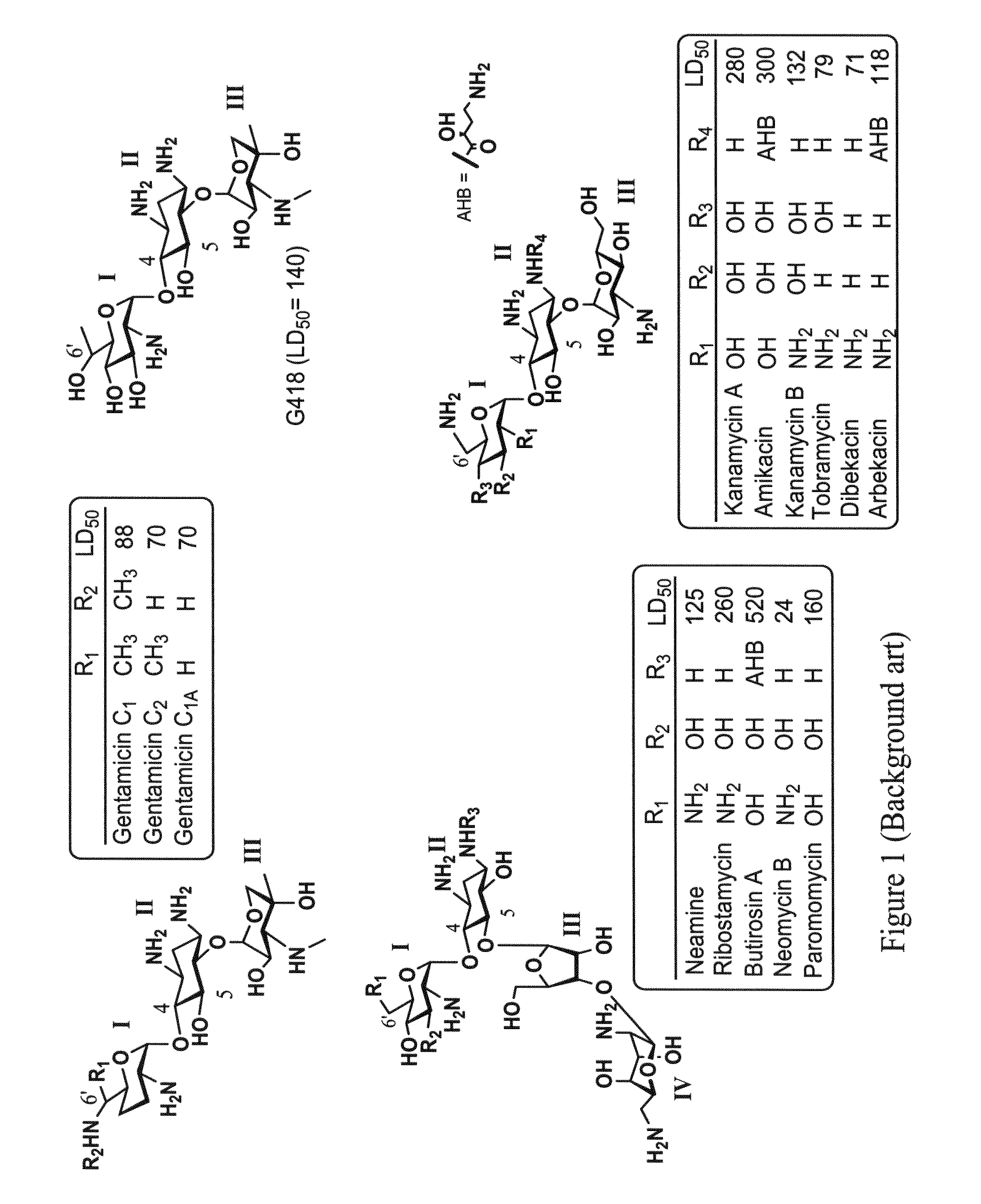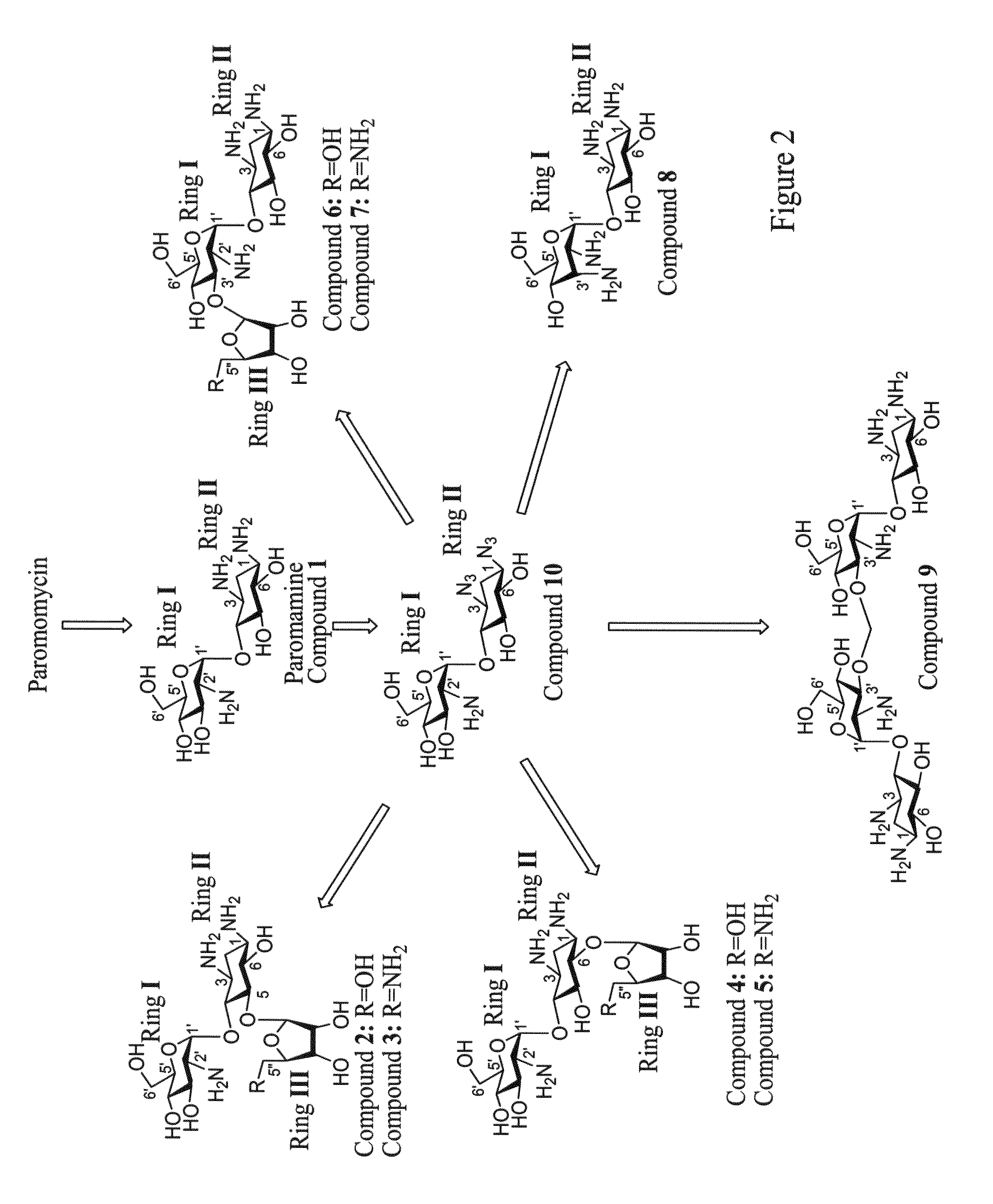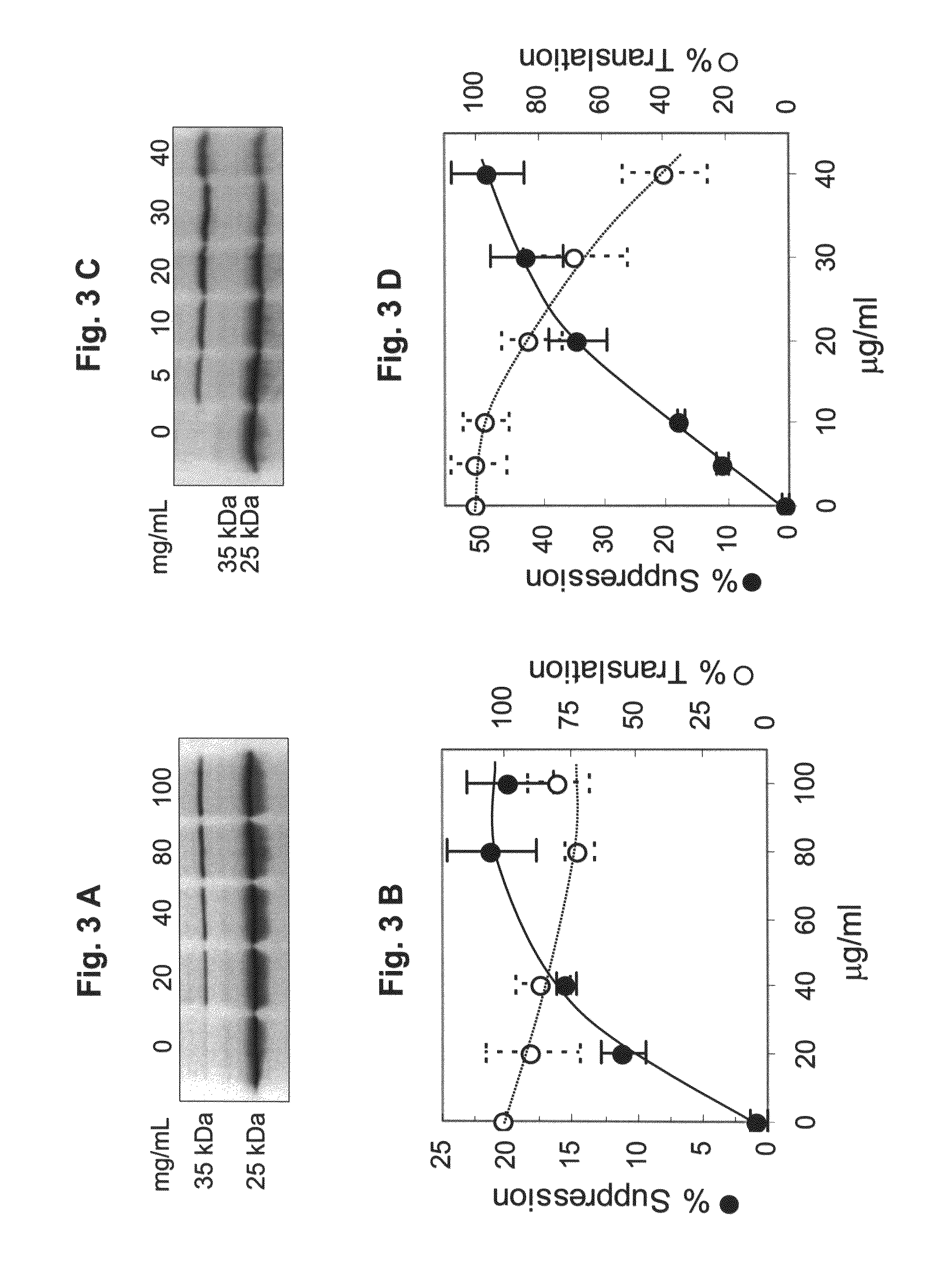Aminoglycosides and uses thereof in the treatment of genetic disorders
a technology of aminoglycosides and aminoglycosides, which is applied in the field of aminoglycosides, can solve the problems of high toxicity of aminoglycosides as pharmaceuticals, the termination of the translation and eventually the truncation of inactive proteins, and the inability to solve many critical problems, so as to improve the effect of termination mutation suppression activity, reducing the toxicity of mammalian cells, and reducing the toxicity of aminoglycosid
- Summary
- Abstract
- Description
- Claims
- Application Information
AI Technical Summary
Problems solved by technology
Method used
Image
Examples
example 1
Chemical Syntheses
[0400]Materials and Methods:
[0401]1H NMR, 13C NMR, Distortionless Enhancement by Polarisation Transfer (1D DEPT), Total Correlation Spectroscopy (TOCSY), Heteronuclear Multiple-Quantum Correlation (HMQC), and Heteronuclear Multiple-Bond Correlation (HMBC) spectra were recorded on a Bruker Avance™ 500 spectrometer. Chemical shifts, reported in ppm, are relative to internal Me4Si (δ=0.0) with CDCl3 as the solvent, and to HOD (hydrogen on demand, δ=4.63) with D2O as the solvent.
[0402]Mass spectroscopy analyses were performed on a Bruker Daltonix Apex 3 mass spectrometer for Electrospray Ionization Mass Spectrometry (ESIMS) conditions, or on a TSQ-70B mass spectrometer (Finnigan Mat) MALDI Micromass spectrometer under MALDI-TOF conditions using α-cyano-4-hydroxycinnamic acid matrix.
[0403]Reactions were monitored by TLC on Silica gel (Gel 60 F254, 0.25 mm, Merck), and spots were visualized by charring with a yellow solution containing (NH4)6Mo7O24.4H2O (120 grams) and (...
example 2
Biological Activity Assays
[0682]The ability of the compounds presented herein, i.e., Compounds 2-9, to read-through stop codon mutations was examined both in-vitro and ex-vivo in mammalian cultured cells.
[0683]All chemicals and reagents were obtained from common commercial sources unless otherwise stated. The commercial antibiotics, paromomycin and gentamicin were obtained from Sigma.
[0684]In Vitro Translation Reactions and Quantification of Suppression and Translation:
[0685]The mutation suppression activity assays were performed on “UGA C” mutation, which was shown to be most susceptible for aminoglycoside-mediated suppression. Initially, Compounds 1-9 were tested for their ability to suppress this nonsense mutation in vitro, using a reporter construct carrying the R3X nonsense mutation (a premature UGA C stop codon) of the PCDH15 gene. Mutations in the PCDH15 gene which encodes protocardherin 15, cause type 1 Usher syndrome (USH1), which is characterized by profound prelingual hea...
example 3
Activity of Exemplary Compound 37
[0720]An exemplary compound of the compounds presented herein, Compound 37, was selected for further comparative studies regarding its capacity to read-through, and thus suppress the expression of stop codon mutations both in-vitro and ex-vivo in mammalian cultured cells. The assays were conducted in comparison to another potent compound according to the present embodiments, Compound 3, and to other known aminoglycosides.
[0721]All chemicals and reagents were obtained from common commercial sources unless otherwise stated.
[0722]Comparative In Vitro Suppression of PCDH15 Nonsense Mutations, Underling Type 1 Usher Syndrome, by Various Aminoglycosides:
[0723]Compound 37 was tested for its ability to suppress a nonsense mutation in-vitro, using a reporter construct carrying either R3X nonsense mutation (a premature UGA C stop codon) or R245X nonsense mutation (a premature UGA A stop codon) of the PCDH15 gene, using gentamicin, paromomycin and Compound 3 as...
PUM
| Property | Measurement | Unit |
|---|---|---|
| temperature | aaaaa | aaaaa |
| temperature | aaaaa | aaaaa |
| temperature | aaaaa | aaaaa |
Abstract
Description
Claims
Application Information
 Login to View More
Login to View More - R&D
- Intellectual Property
- Life Sciences
- Materials
- Tech Scout
- Unparalleled Data Quality
- Higher Quality Content
- 60% Fewer Hallucinations
Browse by: Latest US Patents, China's latest patents, Technical Efficacy Thesaurus, Application Domain, Technology Topic, Popular Technical Reports.
© 2025 PatSnap. All rights reserved.Legal|Privacy policy|Modern Slavery Act Transparency Statement|Sitemap|About US| Contact US: help@patsnap.com



